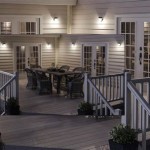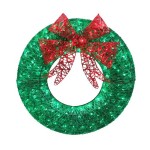Best Outdoor Uplights For Trees: Illuminating Your Landscape
Outdoor uplights are a versatile and effective way to illuminate trees and enhance your outdoor space. With their ability to highlight the beauty of trees, create ambiance, and improve safety, uplights are a popular choice for homeowners and landscape designers. However, selecting the right uplights can be a challenge, given the wide range of models available. This article will guide you through the essential factors to consider when choosing outdoor uplights for trees, highlighting the best options for specific needs and preferences.
Key Considerations for Uplighting Trees
When shopping for outdoor uplights, it's crucial to consider several key factors to ensure you choose the right ones for your trees and landscape:
1. Light Type and Color Temperature
Different light types and color temperatures can dramatically affect how your trees appear at night. Warm white lights (2700K-3000K) create a cozy and inviting atmosphere, while cool white lights (4000K-4500K) provide a brighter and more modern feel. Consider the overall ambiance you wish to achieve in your outdoor space. For example, warm white lights can enhance the natural beauty of deciduous trees, while cool white lights might be more suitable for highlighting the texture of evergreen trees.
2. Light Distribution and Beam Angle
The distribution of light from an uplight can significantly impact how your trees are illuminated. A narrow beam angle (10-30 degrees) creates a focused beam of light, ideal for spotlighting specific features of a tree, such as its trunk or branches. A wider beam angle (45-60 degrees) provides a more diffused light, illuminating the entire tree and creating a softer effect. Choose the beam angle based on the size and shape of the tree and the desired illumination effect.
3. Fixture Size and Style
Uplights come in various sizes and styles to complement different landscape designs. Consider the size of your trees and the overall aesthetic of your outdoor space when choosing a fixture. Smaller uplights can be used to highlight smaller trees or bushes, while larger fixtures may be necessary for larger trees. Choose a fixture that blends seamlessly with your landscape and complements your desired aesthetic.
4. Material and Durability
Outdoor uplights are exposed to the elements, so it's essential to choose fixtures made from durable materials. Aluminum and stainless steel are popular choices for their resistance to corrosion and weathering. Consider the climate in your region when selecting materials and opt for fixtures with appropriate weatherproofing ratings.
5. Installation and Power Requirements
Before purchasing uplights, ensure they are compatible with your existing electrical system. Some uplights can be wired directly to your home's electrical system, while others require a dedicated transformer. Consider the ease of installation and the power requirements when making your decision.
Top Outdoor Uplights for Trees
With these key considerations in mind, here are some of the best outdoor uplights for trees available in the market:
1. LED Uplights: Energy Efficiency and Longevity
LED uplights offer numerous advantages over traditional halogen or incandescent bulbs. They are highly energy-efficient, consuming significantly less power while providing equivalent brightness. LED uplights also boast a longer lifespan, reducing the need for frequent bulb replacements. Look for LED uplights with a high CRI (Color Rendering Index), which ensures accurate color representation and enhances the natural beauty of your trees.
2. Solar-Powered Uplights: Sustainability and Convenience
For eco-conscious homeowners, solar-powered uplights offer a sustainable and convenient option. These uplights rely on solar energy to charge their batteries during the day, automatically illuminating your trees at night. Solar-powered uplights are typically easy to install and require no wiring, making them ideal for areas without existing power outlets.
3. Landscape Lighting Kits: Complete Solutions for Outdoor Illumination
For homeowners seeking a comprehensive lighting solution, landscape lighting kits offer a convenient and cost-effective option. These kits typically include a transformer, multiple uplights, and accessories, providing a complete system for illuminating your outdoor space. Landscape lighting kits are available in various styles and sizes, catering to different needs and preferences.
Choosing the Right Uplights for Your Trees
Selecting the best outdoor uplights for trees involves considering factors such as light type, distribution, fixture size, material, and installation. LED uplights offer energy efficiency and longevity, solar-powered uplights provide sustainability and convenience, and landscape lighting kits offer complete solutions. By carefully considering these factors, you can choose uplights that enhance the beauty of your trees, create a welcoming atmosphere, and improve safety in your outdoor space.

Tree Uplighting Techniques For Spring 1stoplighting

How To Illuminate Trees And Plants Moonlight Design

Outdoor Led Puck Light Uplight For Trees Landscape Dekor

Landscape Lighting Accenting Trees Limelight Outdoor

4 Tree Lighting Ideas That Will Transform Your Landscape

Tree Lighting Outdoor Perspectives

Diy Uplighting Adding Year Round Low Cost Magic To Your Yard And Garden Dustanddoghair

Tree Lighting Tips Techniques Kichler

4 Tree Lighting Ideas That Will Transform Your Landscape

The Best Tips And Tricks Of Outdoor Lighting Placement Bondilights
Related Posts







